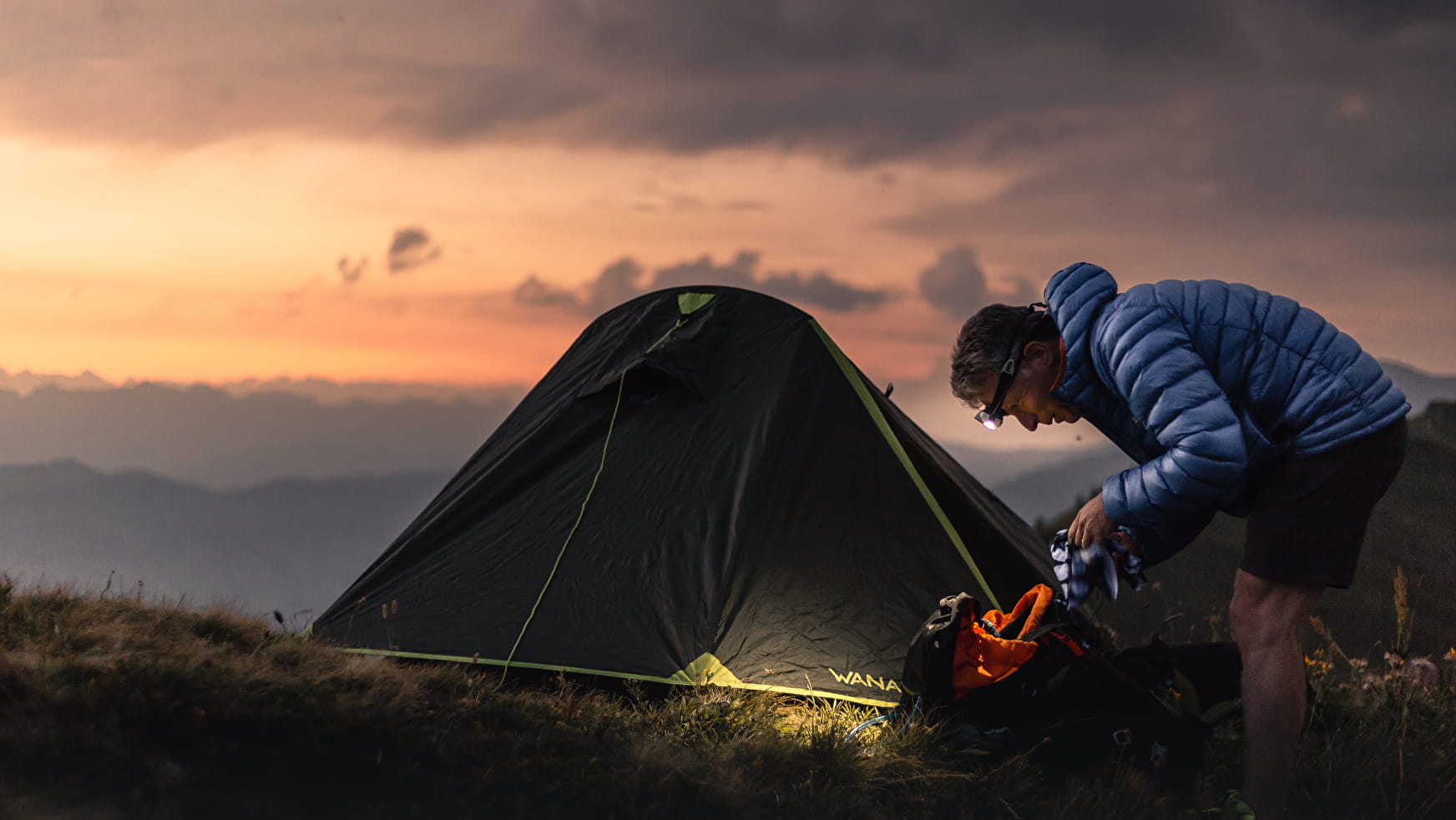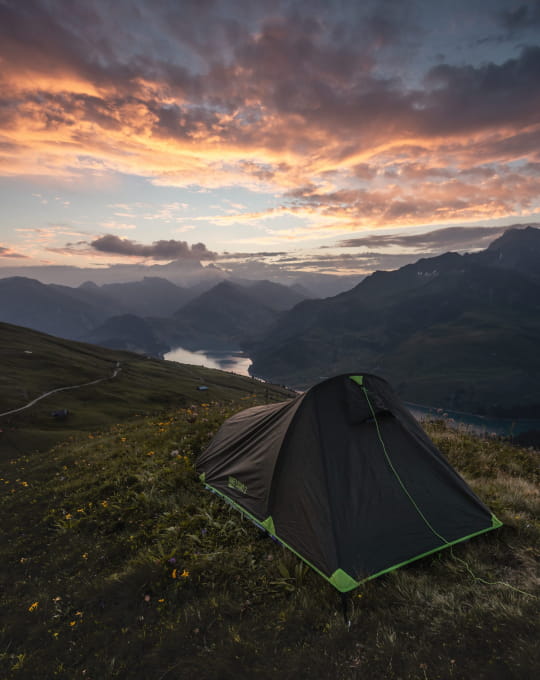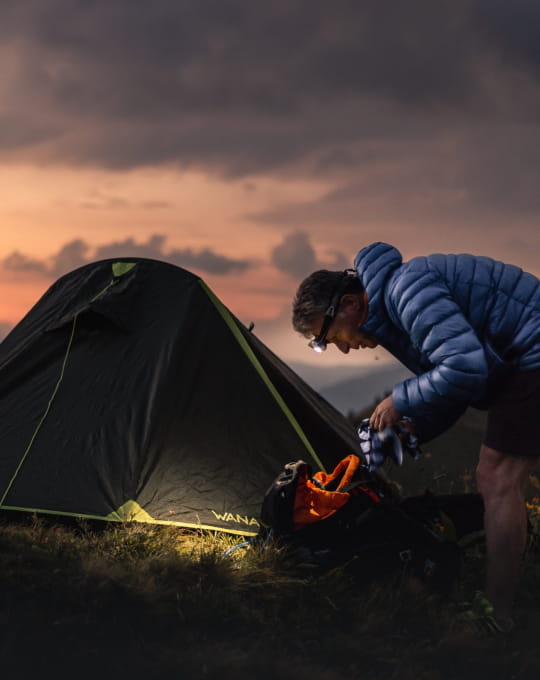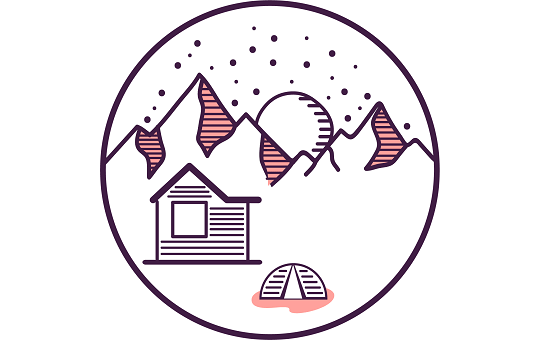Bivouacs: What you need to plan and know

WHAT EQUIPMENT DO YOU NEED?
FOR THE NIGHT
- A tent for all occupants with one extra space to hold equipment and, if possible, an awning to cook and eat in as protection from bad weather.
- A sleeping bag adapted to the temperatures according to the altitude and season where you'll be sleeping.
- A foam or self-inflating pad. If you have the latter, make sure you bring a repair kit as well.
FOR MEALS
- How much water and food you bring depends on your itinerary and the possibilities of replenishing supplies along your way. Consider freeze-dried products specially designed for intense physical activity. They are light to carry and guarantee an appropriate caloric intake.
- Water filters or chlorine tablets make stream water drinkable, so you do not have to carry litres of water.
- To be prepared under any circumstance, remember the indispensable gas camping stove, and don't forget a headlamp and a multi-purpose mess kit.
All of these elements influence the weight of your rucksack, so make lightness and multi-purpose equipment a priority so that the total load does not exceed your physical limit
WHERE IS THE BEST PLACE TO SET UP CAMP?
The first rules to follow when choosing a place will be dictated by local regulations. In the Savoie Mont Blanc area, bivouacs are tolerated for the most part outside of roads and urban zones. Nevertheless, certain towns, natural reserves, and regional and national parks have specific regulations. For example, Vanoise National Park does not allow stays outside of refuges, whereas the Massif des Bauges Natural Park lets you pitch your tent at sundown as long as you pack it up in the first few hours after sunrise.
Regardless of the particularities of each location, the concept is still the same: respect the environment you are staying in, do not bother wildlife with inappropriate behaviour or noises, and leave no trace behind.


COMMON-SENSE RULES
If possible, choose an area with a view and loose soil on flat ground. Remove stones and other objects that could ruin your night.
Even better is a water source nearby to use to wash up.
Avoid risky grounds and configurations, such as falling rocks and water that could overflow its banks and surprise you in bed if it rains.
You're all set up? The only thing left to do is enjoy the moment and savour the stories of the past, present, and future everyone tells in the evening—
until the night takes over and reminds you that more sensations await you tomorrow.
BIVOUACS IN VANOISE NATIONAL PARK
Move at your own pace through timeless scenery. Wake up your senses and reconnect with the elements. Cross paths with rare species and experience moments that are just as extraordinary. In the Vanoise, it's possible. And it will always be like that as long as each of us protects the environments we cross. The regulations in Vanoise National Park are there just for that. And it's for this reason bivouacs are authorised only between 1 June and 30 September and only close to certain refuges. Twenty-two areas welcome you and your light-weight, compact tent from 7 PM to 8 AM at the cost of €5 per person, but you must reserve in advance. Quite a bargain for an exceptional experience facing summits reaching almost 4,000 metres high.

